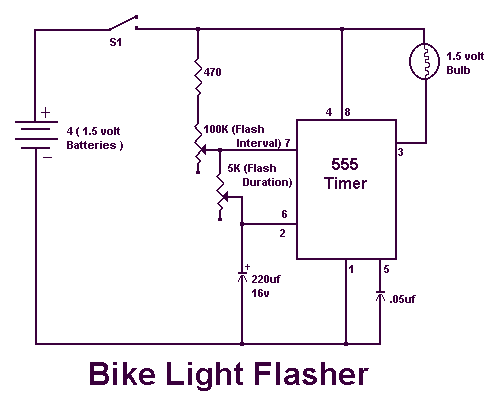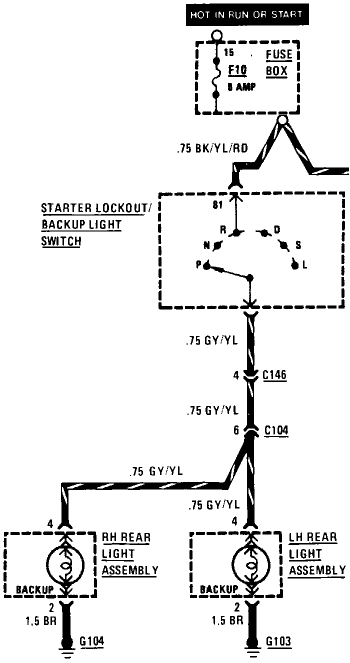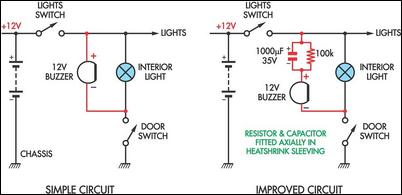
Bike Light Flasher with 555

I ride my bike allot at night and sometimes I'm not sure if people can see me. This circuit will flash an incandescent light that you can purchase from Radio Shack. Adjust the VR's for your flash requirements and make sure that the lamp you use is designed to put out high brightness. The enclosure should be water tight. The Batteries can be replaced by a bike wheel generator and a diode. If you add the generator then you can still use rechargeable batteries and the batteries will charge while you are riding your bike.
The described circuit is intended to enhance visibility for cyclists riding at night by utilizing a flashing incandescent light. To construct this circuit, a few key components are necessary: a high-brightness incandescent bulb, variable resistors (VRs) for adjusting the flash rate, a waterproof enclosure, and a power source which can be either replaceable batteries or a bike wheel generator.
The flashing mechanism can be achieved using a simple astable multivibrator circuit, typically built with two transistors, resistors, and capacitors. The VRs serve as adjustable resistors that modify the timing of the flashing effect, allowing the user to customize the frequency of the light flashes based on personal preference or environmental conditions.
The incandescent bulb chosen must have a high luminosity to ensure maximum visibility. It is advisable to select a bulb that is rated for use in outdoor conditions to withstand potential moisture exposure. The waterproof enclosure is crucial for protecting the electronic components from rain and other environmental factors, ensuring reliability and longevity of the circuit.
For power, the circuit can be powered by standard batteries, which should be easily accessible for replacement. Alternatively, integrating a bike wheel generator into the design provides a sustainable power solution. The generator can be connected to charge rechargeable batteries while riding, using a diode to prevent backflow of current. This setup not only allows for continuous operation of the light but also contributes to energy efficiency.
Overall, this circuit design combines safety, functionality, and sustainability, making it an excellent choice for nighttime cyclists seeking to enhance their visibility on the road.I ride my bike allot at night and sometimes I'm not sure if people can see me. This circuit will flash an incandescent light that you can purchase from Radio Shack. Adjust the VR's for your flash requirements and make sure that the lamp you use is designed to put out high brightness. The enclosure should be water tight. The Batteries can be replaced by a bike wheel generator and a diode. If you add the generator then you can still use rechargeable batteries and the batteries will charge while you are riding your bike.
🔗 External reference
The described circuit is intended to enhance visibility for cyclists riding at night by utilizing a flashing incandescent light. To construct this circuit, a few key components are necessary: a high-brightness incandescent bulb, variable resistors (VRs) for adjusting the flash rate, a waterproof enclosure, and a power source which can be either replaceable batteries or a bike wheel generator.
The flashing mechanism can be achieved using a simple astable multivibrator circuit, typically built with two transistors, resistors, and capacitors. The VRs serve as adjustable resistors that modify the timing of the flashing effect, allowing the user to customize the frequency of the light flashes based on personal preference or environmental conditions.
The incandescent bulb chosen must have a high luminosity to ensure maximum visibility. It is advisable to select a bulb that is rated for use in outdoor conditions to withstand potential moisture exposure. The waterproof enclosure is crucial for protecting the electronic components from rain and other environmental factors, ensuring reliability and longevity of the circuit.
For power, the circuit can be powered by standard batteries, which should be easily accessible for replacement. Alternatively, integrating a bike wheel generator into the design provides a sustainable power solution. The generator can be connected to charge rechargeable batteries while riding, using a diode to prevent backflow of current. This setup not only allows for continuous operation of the light but also contributes to energy efficiency.
Overall, this circuit design combines safety, functionality, and sustainability, making it an excellent choice for nighttime cyclists seeking to enhance their visibility on the road.I ride my bike allot at night and sometimes I'm not sure if people can see me. This circuit will flash an incandescent light that you can purchase from Radio Shack. Adjust the VR's for your flash requirements and make sure that the lamp you use is designed to put out high brightness. The enclosure should be water tight. The Batteries can be replaced by a bike wheel generator and a diode. If you add the generator then you can still use rechargeable batteries and the batteries will charge while you are riding your bike.
🔗 External reference





